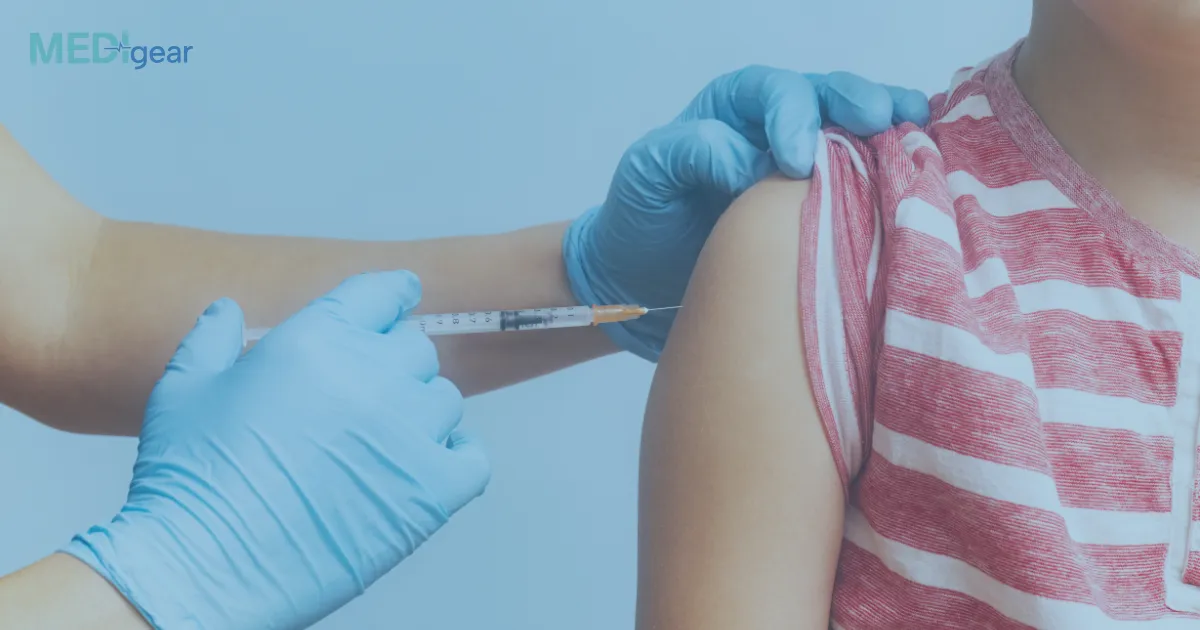1. Introduction
Vaccines are one of the most effective tools in modern medicine for preventing infectious diseases. By priming the immune system to recognize and combat pathogens, vaccines save millions of lives each year. Understanding how vaccines work helps highlight their critical role in individual and public health.
2. Understanding the Immune System
The immune system protects the body from harmful microbes such as viruses, bacteria, fungi, and parasites. It has two main components:
- Innate Immunity: The first line of defense, providing general protection through barriers like skin and immune cells that attack invaders non-specifically.
- Adaptive Immunity: A highly specific response involving B cells (produce antibodies) and T cells (destroy infected cells). This component “remembers” pathogens, enabling faster and stronger responses upon future exposure.
Vaccines primarily work by training the adaptive immune system.
3. How Vaccines Work
Vaccines introduce a harmless part or mimic of a pathogen to the body, triggering an immune response without causing disease.
3.1 Types of Vaccines
- Inactivated or Killed Vaccines
- Contain pathogens that are killed and cannot replicate.
- Examples: Inactivated polio vaccine, hepatitis A vaccine.
- Live-Attenuated Vaccines
- Contain weakened forms of the pathogen that can replicate minimally but do not cause illness in healthy individuals.
- Examples: Measles, mumps, rubella (MMR) vaccine, varicella (chickenpox) vaccine.
- Subunit, Recombinant, Polysaccharide, and Conjugate Vaccines
- Contain only specific pieces of the pathogen (protein, sugar, or capsule).
- Examples: Hepatitis B vaccine, HPV vaccine, pneumococcal vaccine.
- mRNA Vaccines
- Contain messenger RNA that instructs cells to produce a harmless piece of the pathogen (like a spike protein) to trigger immunity.
- Examples: COVID-19 mRNA vaccines (Pfizer-BioNTech, Moderna).
- Viral Vector Vaccines
- Use a harmless virus to deliver genetic material of the pathogen to stimulate an immune response.
- Examples: Ebola vaccine, Johnson & Johnson COVID-19 vaccine.
3.2 Immune Response After Vaccination
- Recognition: Immune cells detect the vaccine antigen as foreign.
- Activation: B cells produce antibodies specific to the antigen; T cells help coordinate the immune response.
- Memory Formation: The body stores immune “memory cells” that recognize the pathogen if exposed in the future.
- Rapid Response: Upon real exposure, the immune system responds faster and more effectively, preventing illness or reducing severity.
4. Benefits of Vaccination
4.1 Individual Protection
- Reduces the risk of infection or severe disease.
- Prevents complications, hospitalization, and death.
4.2 Community Protection (Herd Immunity)
- When a significant portion of the population is vaccinated, disease transmission slows.
- Protects vulnerable populations who cannot be vaccinated (infants, immunocompromised individuals).
4.3 Disease Eradication and Control
- Successful vaccination campaigns have eliminated or drastically reduced diseases such as smallpox and polio.
- Continuous immunization helps control seasonal illnesses like influenza and prevent outbreaks.
5. Myths and Misconceptions
- Vaccines cause the disease: Most vaccines use inactivated or harmless components; illness is extremely rare.
- Natural infection is better than vaccination: While natural infection can confer immunity, it carries significant risks of complications, hospitalization, or death.
- Vaccines contain unsafe ingredients: Vaccine ingredients are extensively tested for safety, and harmful components are present only in trace, harmless amounts.
6. Future of Vaccination
- mRNA and DNA vaccines: Enable rapid development against emerging pathogens.
- Universal vaccines: Research is underway for universal influenza vaccines and broad-spectrum coronavirus vaccines.
- Therapeutic vaccines: Used to treat diseases such as cancer and chronic infections.
- Nanotechnology-based delivery systems: Enhance immune response and reduce side effects.
7. Conclusion
Vaccines work by teaching the immune system to recognize, remember, and rapidly respond to pathogens. They protect individuals, prevent disease spread in communities, and save millions of lives worldwide. With continuous research and innovation, vaccines remain one of the most powerful tools in global public health.






